The Environmental Footprint of a Single Paper Document: A 2025 Report
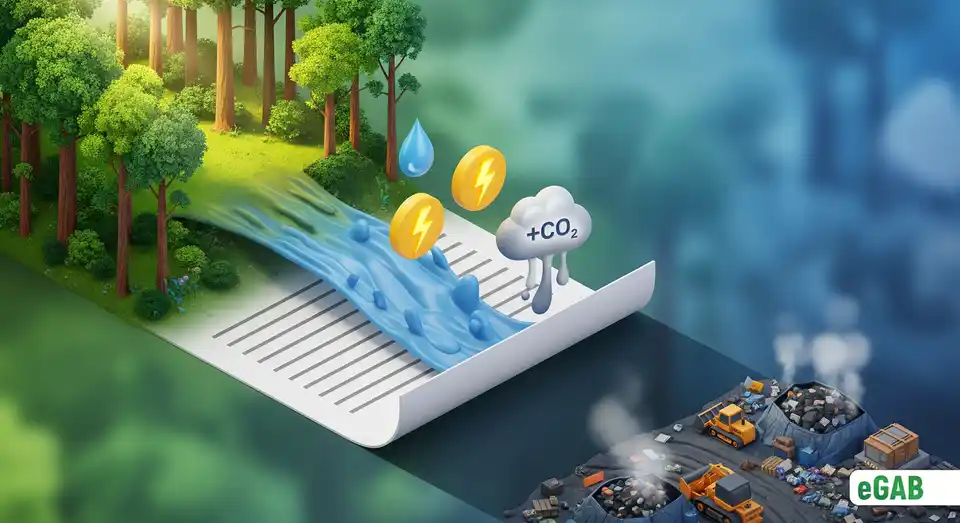
 Author:
Artem Grigoriev
Author:
Artem Grigoriev
- How Does Paper Production Drive Global Deforestation?
- What Are the Hidden Resource Costs of Manufacturing One Sheet of Paper?
- How Does Paper Waste Harm Landfills and the Atmosphere?
- How Effective is Recycling at Reducing Paper's Environmental Impact?
- How eGAB Creates a Zero-Footprint Document Ecosystem
- Unfolding the True Environmental Cost of Paper
Technology is everywhere. It’s part of nearly every aspect of our lives, so it's no surprise that Artificial Intelligence (AI) is making huge waves in education. It promises a future where learning is more personalized, efficient, and accessible than ever before. We designed this guide to walk you through these exciting developments. We’ll break down what this transformation really means for students, teachers, and schools.
We'll show you how AI isn't just some futuristic idea. It's a practical tool that’s being used today. It helps solve some of the most persistent challenges in education, from creating personalized learning paths to automating tedious administrative tasks.
Our goal is simple: to demystify the technology behind AI in education. We provide clear, straightforward explanations without any overwhelming jargon. We want you to feel confident and informed about the changes that are happening. We’ll cover it all, from the basic definitions of AI and machine learning to the specific applications that are already reshaping classrooms around the world.
Of course, it’s important to see the whole picture. We’ll also dig into the ethical considerations and challenges. Integrating AI into education isn't always straightforward, which is why we'll give you a balanced perspective. We'll cover both the incredible opportunities and the potential pitfalls. Join us as we explore how AI is setting the stage for a smarter, more adaptive, and inclusive future for everyone.
📘 This post is part of our comprehensive guide to "The Problems with Paper Documents: A Complete Guide". Explore it to find answers to all your questions ;)
How Does Paper Production Drive Global Deforestation?
Have you ever stopped to think about where that single sheet of paper on your desk really comes from? Its journey starts in a forest, and frankly, it's not a pretty story. So, how does paper production cause deforestation? The connection is both direct and severe. The pulp and paper industry is a primary driver of global deforestation (the large-scale clearing of forests), consuming a shocking 13-15% of all wood harvested worldwide . The link between paper production and deforestation is undeniable. To help you grasp that number, think about this: we cut down between 4 and 8 billion trees every single year .
What's even more concerning is a fact from groups like the Environmental Paper Network (The State of the Global Paper Industry) : an incredible 42% of all industrially harvested wood is chopped down just to make paper. This has a direct and devastating impact on our planet. When we clear forests, especially ancient, old-growth ones, we destroy vital carbon sinks -natural environments that absorb carbon dioxide from the atmosphere. You can think of these forests as the planet's lungs; they pull CO₂ from the air, and when they're gone, that CO₂ stays in the atmosphere, speeding up climate change. The damage, however, doesn’t end there. This level of deforestation also destroys the homes of countless animal and plant species, threatening global biodiversity (the variety of life on Earth) and disrupting the local water cycles that communities rely on.
It's worth remembering this key point: every document you print is directly linked to a felled tree and a shrinking forest. When you add them all up, the collective weight of these individual choices creates a huge global problem. This is exactly why it's more critical than ever to make conscious decisions about paper, like sourcing it from responsibly managed forests. Choosing paper from sustainably managed forests helps ensure that trees are replanted and that these precious ecosystems are protected for the future.
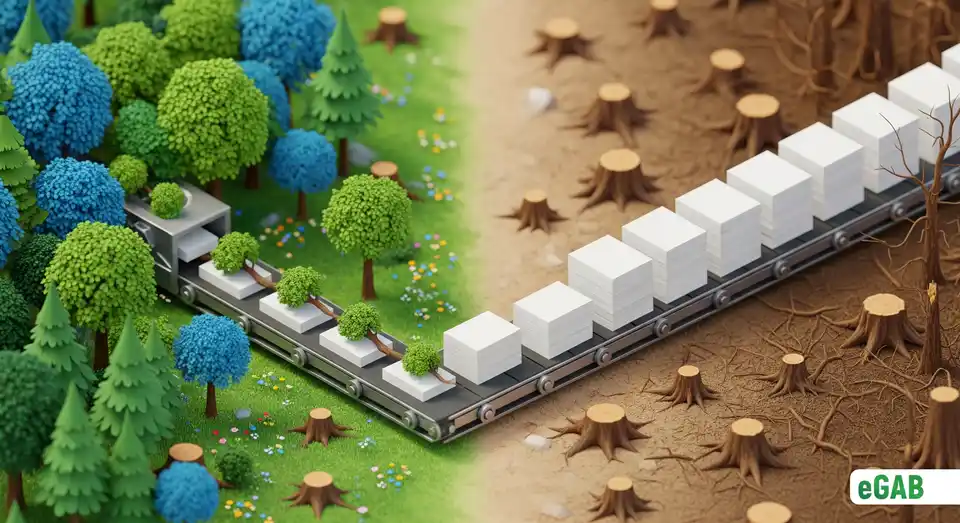
What Are the Hidden Resource Costs of Manufacturing One Sheet of Paper?
So, just what is the environmental footprint of a single paper document? The true environmental cost of paper is about so much more than just the tree. The manufacturing process uses a ton of resources, carrying a heavy life-cycle impact (that’s the total environmental effect of a product from creation to disposal) with hidden workflow and financial costs that add up fast. We rarely think about this overall environmental impact of paper production . So, let's pull back the curtain and ask: what resources does it actually take to create just one A4 sheet of virgin paper (paper made from fresh tree pulp)?
First, let's talk about the water footprint of paper . How much water does it take to make one sheet of paper? On average, producing a single sheet of paper requires a shocking 10 liters of water , though depending on the factory, that number can vary between 2 and 13 liters. That’s a significant amount of water for something we often use and toss out without a second thought. Then, you have to consider the resource cost of paper manufacturing . Making that same sheet consumes around 0.05 kWh of energy , which shows just how high the energy consumption for this industrial process really is.
The carbon footprint of a single paper sheet is equally alarming. Creating one kilogram of virgin-fiber paper generates about 1.2 kg of CO₂ equivalent (CO₂e) (a standard unit for measuring the warming impact of different greenhouse gases). For a single A4 sheet, this comes out to 5 grams of CO₂e , and that's before it even gets to your printer. If you use a laser printer, you can add another gram, bringing the total to 6 grams of CO₂e for just one printed page. So, what is the carbon footprint of printing a page? It's a mix of the paper's built-in carbon and the energy used by the printer itself. To make matters even worse, the pulp is often bleached with harsh chlorine-based chemicals, a process that creates toxic wastewater filled with dioxins (highly toxic pollutants) that end up in our rivers and harm aquatic life.
Here's the bottom line: the invisible "backpack" of resources carried by every sheet of paper is surprisingly heavy. When you choose to go digital or use paper from certified sustainable sources, you’re doing more than just saving a tree. You are also conserving gallons of water and cutting the energy and carbon emissions that are tied to every single page.
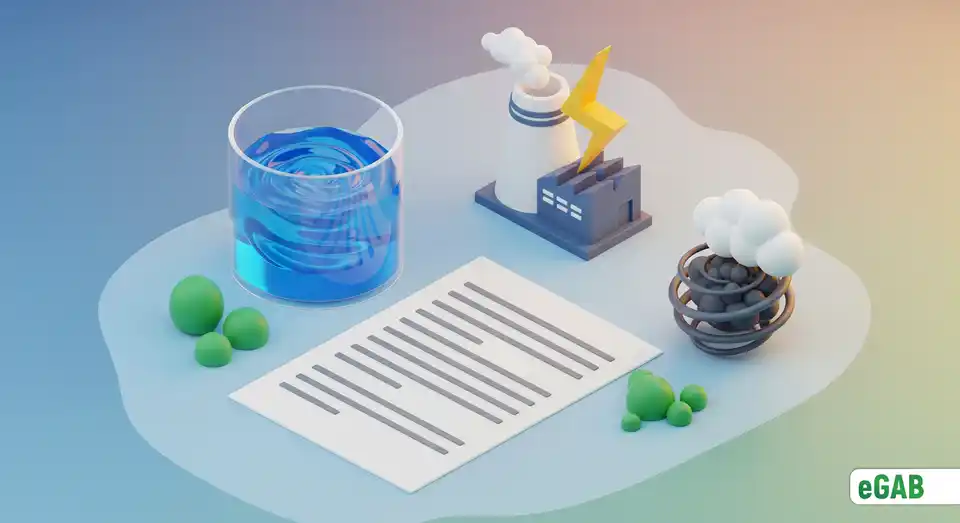
How Does Paper Waste Harm Landfills and the Atmosphere?
So, what really happens to a document once you're done with it? The paper consumption environmental effects don't just stop when the ink dries. For most paper, its final stop is a landfill, and that’s where its environmental damage kicks into a new, dangerous gear. Paper and cardboard are a massive part of our garbage problem, making up about 26% of all material we dump in global landfills , according to the U.S. Environmental Protection Agency (EPA Facts and Figures about Materials, Waste and Recycling) . The amount of paper waste in landfills is staggering. And in the business world, it's even worse-paper products can be responsible for over half of a company's total waste , which contributes to the significant real estate cost of document storage.
What happens when paper decomposes in a landfill? When paper is buried in a landfill, it starts to break down without oxygen. This process is called anaerobic decomposition , and it releases methane (CH₄) , a seriously potent greenhouse gas that traps heat in our atmosphere. This release of methane from paper decomposition is a major threat to our climate. In fact, the IPCC reports that methane is over 27 times more powerful than carbon dioxide at trapping heat. Simply put, every document you throw away becomes a tiny methane factory, directly fueling climate change.
The problem isn't just in the air. The inks, dyes, and coatings on that paper don't just disappear. As the paper rots, these chemicals can leak into the soil and seep into our groundwater, creating a toxic sludge called leachate (a polluted liquid that drains from landfills). This environmental contamination is a serious, long-term threat, and for archived documents, this physical decay is compounded by liabilities, turning them into a potential legal time bomb.
This is why it matters so much: throwing paper in the trash is anything but a harmless act. It actively pumps powerful greenhouse gases into the atmosphere and leads to the chemical pollution of our land and water. That’s exactly what makes cutting down on paper use-and getting serious about waste management-such a direct and powerful way to protect our planet.
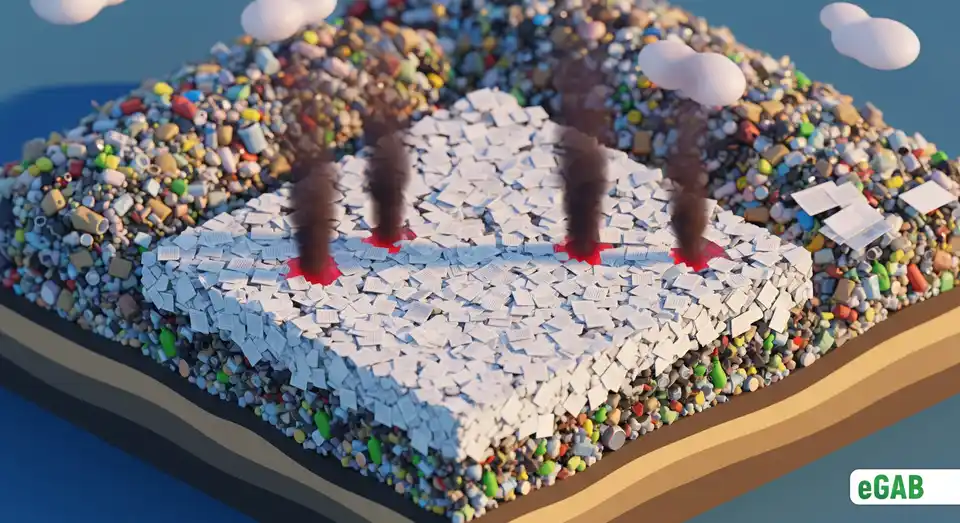
How Effective is Recycling at Reducing Paper's Environmental Impact?
We often talk about recycling as the perfect fix for our paper habit. But just how effective is paper recycling at reducing environmental impact? While it's a vital part of a circular economy (a system designed to eliminate waste by reusing resources), it isn't a magic wand that makes the environmental footprint vanish. The truth is, paper recycling effectiveness varies a lot, mostly because we still don't recycle a huge amount of paper. In fact, as of 2021, the global paper recycling rate was only about 59.9% . That means nearly half of all paper we produce still gets dumped in landfills or burned.
Some places are definitely doing a much better job than others. Europe, for example, is a real leader here, with a paper recycling rate of 79.3% in 2023, according to the Confederation of European Paper Industries (Cepi 2023 Preliminary Statistics) . The UK has also managed to keep its rate above 70% . These numbers show that high-efficiency recycling is totally achievable, but it takes a real commitment to both infrastructure and public awareness.
So, is recycled paper really better for the environment? The great news is that choosing recycled paper makes a real, measurable difference and significantly lowers the overall environmental impact . A look at the virgin paper vs recycled paper impact reveals a clear winner. For example, compared to making paper from scratch, using recycled paper cuts water consumption by about 40% . The CO₂ reduction is another huge win; a single sheet of recycled paper creates only about 3.5 grams of CO₂e -a solid 30% less than the 5 grams from a virgin-fiber sheet. Now, it's important to remember that recycling isn't a zero-impact magic bullet, since paper fibers break down after a few cycles. Still, it drastically cuts down the environmental footprint of paper by taking the pressure off our forests, water, and climate.
So, what's the next step you can take? When you absolutely have to use paper, make a conscious choice. Look for products with the highest possible amount of post-consumer recycled content (that's material from products people like you have already used and recycled). By doing this, you're sending a powerful message to the market that you support better recycling systems, and you're helping to ease the immense pressure on our planet's precious resources. Understanding all this really answers the big question: why is reducing paper use so important for the planet?
Takeaway: Every sheet of paper has a story that starts with a tree and often ends in a landfill, carrying not only environmental costs but also critical data security risks on its journey. While recycling is a powerful tool, the single best choice you can make is to simply use less paper. When you must use it, always choose 100% post-consumer recycled content to shrink your environmental footprint.
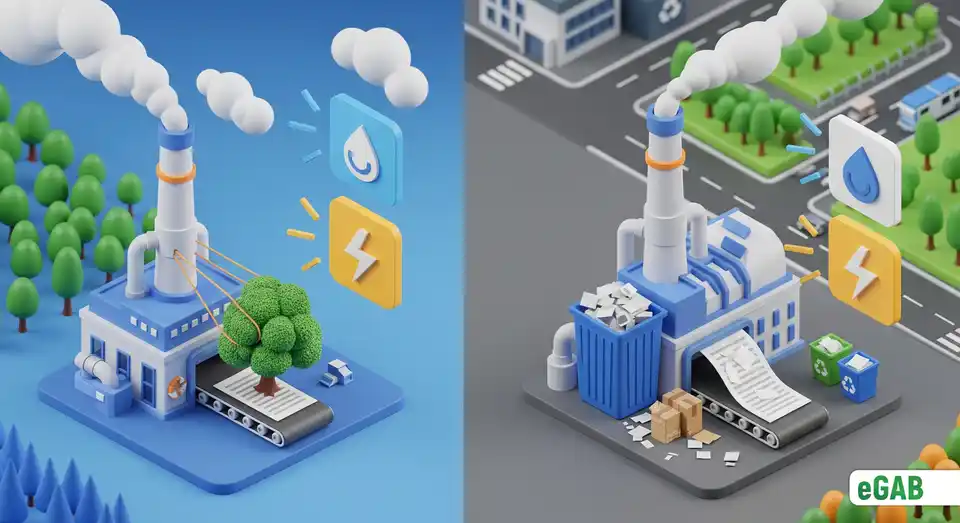
How eGAB Creates a Zero-Footprint Document Ecosystem
The journey of a paper document, from the forest to the landfill, leaves a significant environmental scar . eGAB offers you a powerful alternative: a zero-footprint ecosystem that aligns your operational efficiency with your corporate environmental responsibility.
By running on a fully digital and paperless model , eGAB completely eliminates the environmental impact tied to the traditional document lifecycle. This means no more consuming trees for pulp, no more using massive amounts of water during manufacturing, and no more carbon emissions from production and global transport. The platform makes the very concept of a "physical copy" obsolete, moving your organization from a paper-intensive model to a sustainable, digital-first standard for all official documents.
Adopting eGAB is a direct and measurable way to support your sustainability goals . It allows your institution to significantly reduce its carbon footprint and resource consumption, turning a core business process into a clear statement of your commitment to environmental stewardship.
Why It Matters: Today's students and partners want to align with organizations that share their values. Choosing a zero-footprint document solution isn't just good for the planet; it's a powerful way to strengthen your brand and demonstrate that your commitment to sustainability is more than just talk.
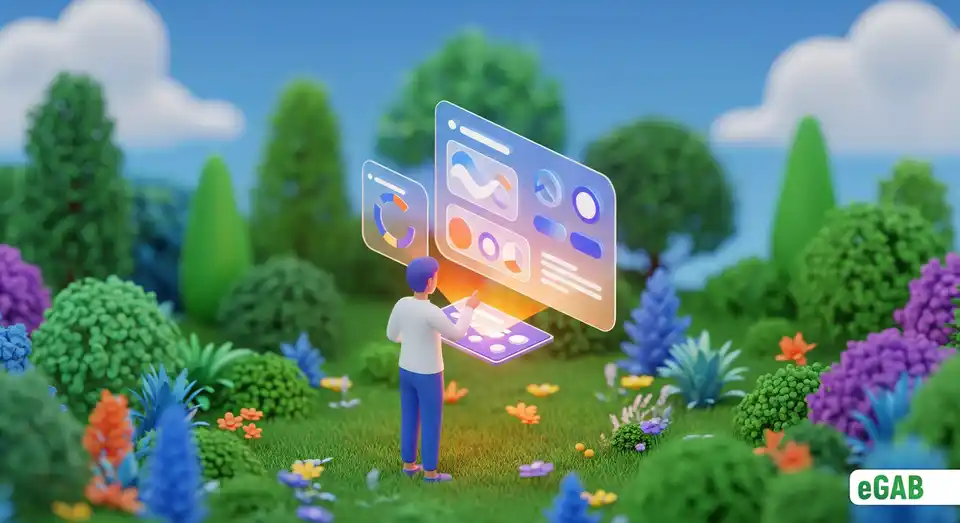
Unfolding the True Environmental Cost of Paper
So, what's the real story behind that humble sheet of paper? As we've seen, its journey is far more complex and costly than most of us realize. The environmental footprint of a single paper document begins with a devastating blow to our planet's forests. In fact, paper production drives global deforestation by consuming an incredible 42% of all commercially harvested wood. This single action doesn't just destroy critical carbon sinks; it also wipes out biodiversity. But the environmental bill doesn't end there; businesses also face significant challenges, turning paper processes into the ultimate bottleneck for automation. Making just one sheet of new paper has hidden costs, demanding a shocking 10 liters of water and significant energy, all while creating about 5 grams of CO₂ equivalent before it even reaches your printer.
Once used, the story gets even darker. When you throw it away, that paper contributes to the massive problem of paper waste in landfills , where it accounts for over a quarter of all municipal garbage. Buried without oxygen, it doesn't just sit there; it becomes a tiny factory for greenhouse gases, releasing potent methane from paper decomposition -a gas over 27 times more powerful than CO₂ at warming our planet. While paper recycling is effective at lessening this damage-slashing water use by 40% and CO₂ emissions by 30%-it’s not a perfect solution, especially since nearly half of all paper worldwide still isn't recycled. Ultimately, the entire life cycle reveals a simple truth: the most powerful choice you can make is to drastically reduce how much paper you use in the first place, a move that addresses not only environmental concerns but also the significant issue of how much time employees waste on paperwork. By understanding the true cost from forest to landfill, you can see that going digital, or at the very least choosing 100% post-consumer recycled paper, is one of the most direct and impactful ways to protect our shared environment.
➡️ So, what's next? We've covered the financial and environmental costs. It's time to tackle an even bigger threat. Learn about the critical data security risks of paper documents that go beyond the shredder.
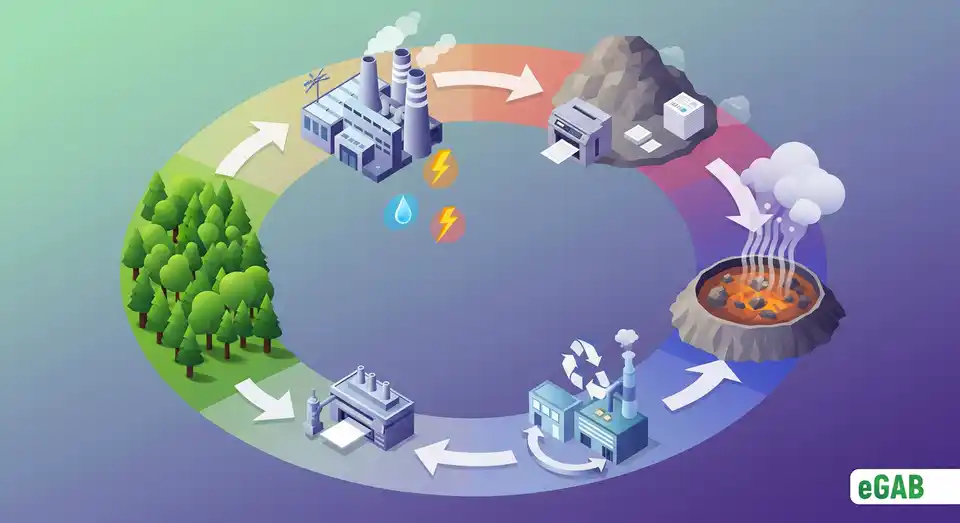
Are Your Paper Archives a Legal Time Bomb? Understanding GDPR and Data Retention
The Ultimate Bottleneck: How Paper-Based Processes Are Killing Your Business Automation
What Are Verifiable Documents? A Beginner's Guide to the Future of Trust
Why Public NFT Platforms Are the Wrong Choice for Academic Credentials
Why an In-House Credential Verification System Is a Mistake for Universities
